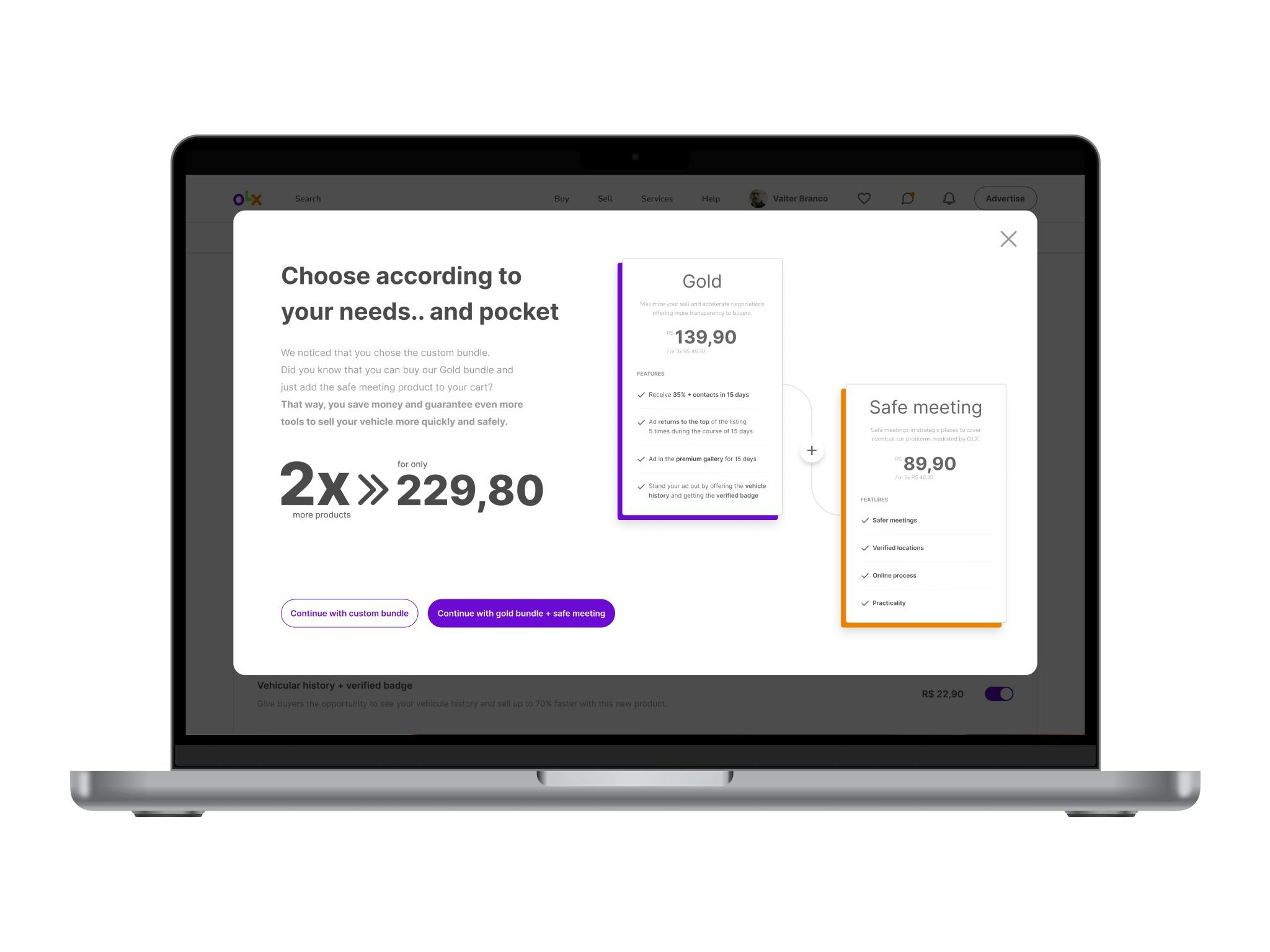
Context
Autos Paid Products Portfolio was designed to be a repository of actual and future paid products and services offered to private auto sellers in order to simplify the purchase process and communication between the platform and its users through transparency.
I collaborated with another designer for a period of two months during the Research and Experience phases and then worked independently for an additional two months to focus on designing the user interface.
The problem
While deep-diving on how to introduce a new paid product to auto private sellers, we noticed that despite the presence of various active products and services on the platform, there was a distinct lack of a centralized location where users could access comprehensive context and information about them, which led to user frustration and misuse of products.
In addition, nearly every product had multiple access points for purchase and activation, complicating the user experience.
I worked with another team and embarked on a redesign of the entire process.
Challenge
How might we create a portfolio of paid products for private sellers, that is easy to understand and see value, all the while being scalable to adding new products and reusable by other categories within OLX?
Process
I collaborated with another designer during the discovery and experience phase. We began by analyzing the profiles of autos sellers on OLX to uncover user motivations, pain points, and behaviors. To gain further insights, we requested a quantitative survey from the Research Team to understand the purchasing patterns of different groups and the reasons for selling vehicles. Based on these numbers, we were able to draft 2 experiences focusing on different approaches.
Next, we conducted a moderated usability test via Zoom, involving 12 users who tested two different experiences.
The goal was to come out with a layout and architecture to prioritize in the leagues.
- Goal: Develop a scalable and replicable page displaying all paid products in the autos category, with editing capabilities.
- Target audience: Sellers.
- Desired outcomes: Boost purchases and validate the value proposition of bundles by enabling users to easily purchase, activate, and utilize products in their ads with minimal uncertainty.
Time line
Principles
Set of 4 principles used to structure the project.
Local - It’s about finding products that can help you sell your vehicle even faster
Web/app - Focus on the most common devices for ads creations and product purchase
Objective - Focus on getting people engaged in a more dynamic and direct flow
Simple - Ease the purchase process
Opportunities
Based on the insights collected during the autos annual qualitative research, desk research and report analyzes, 3 core opportunities emerged.
01. Putting the puzzle together
02. Autonomy
03. Communication
Putting the puzzle together
Analyzes
The existing page primarily emphasized visibility products as they appeared immediately after ad creation. However, upon examining various cases, we discovered many users had purchased a bundle but failed to activate all the products within their ad.
While looking at the visibility and time spent on the page, data showed us that most users just scanned information about how upgrades worked without accessing the details of the bundles, causing the second part of the page to be much less accessed.
Interestingly, most of them desired to purchase a single product separately, unaware that it was already included in the previously bought bundle.
Planning and structuring
The page was divided into three main sections where users could navigate through a tab filter.
The bundles section gained more prominence, where users will always find three options that are aimed at increasing visibility, security, and personalization for ads. A recommendation tag was also included, working as a pricing comparison.
Autonomy
Create you bundle
With the “create your bundle” section, the user would add products of their interest into a cart before finalizing the purchase, giving them autonomy over the ad itself. This way, we not only facilitate adding new products in the layout, but we also gain control over scalability.
The maintenance for the designers and engineers also becomes much more practical.
Deals
If the user chooses to create a bundle, a page with financial deals considering their choice is shown soon after.

Checkout
The checkout and payment stages also became very descriptive and objective, avoiding too many clicks and possible confusion.
In case activation is needed, the user receives a notification at the end of the purchase flow.
Communication
Know our products
The "know our products" section highlights the benefits of each product, which contains a "learn more" option that takes the user to a specific landing page in case they need more information.
Overall results
The product is due to be released in 2024.1
Report analysis from customer service and user research
(268 user complaints and 12 in-depth interviews):
- 65% - Platform users reported not knowing how to purchase a bundle or use the products in their ads (mobile + desktop).
- 70% - Non-platform users reported that having a centralized cart experience facilitates and engages purchases (mobile + desktop)